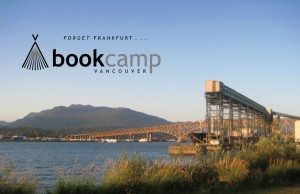 The atmosphere at this weekend’s excellent BookCamp Vancouver 2009 was quite different than other unconferences I’ve attended in the past. For one thing, people there were taking notes using pencil and paper. And unlike other unconferences, there was an absence of laptops, cameras, and ubiquitous social media coverage; even the #bcvan09 hashtag traffic on Twitter was attenuated versus other unconferences I’ve attended.
The atmosphere at this weekend’s excellent BookCamp Vancouver 2009 was quite different than other unconferences I’ve attended in the past. For one thing, people there were taking notes using pencil and paper. And unlike other unconferences, there was an absence of laptops, cameras, and ubiquitous social media coverage; even the #bcvan09 hashtag traffic on Twitter was attenuated versus other unconferences I’ve attended.
If I were to summarize the tone of the conference in one word, that word would be ‘fear‘. The publishing world is rapidly approaching a crossroads, and it doesn’t seem like its inhabitants are any better prepared for the transition to digital media than their brethren in the music and movie industries. Sean Cranbury‘s session on digital rights management could have been about the music industry if you replaced the word ‘book’ with the word ‘song’ in the discussion. This is somewhat disturbing, since there have been numerous examples of what works and doesn’t work in digital media.
The concerns of publishers boil down to economics. Publishers are struggling to reconcile the costs of book production with consumers’ unwillingness to pay for content. Regardless of whether the content is delivered via the Internet, or as an electronic book, consumers are less and less willing to pay for content, much to publishers’ chagrin. For many attendees, I think the real shock came from comments by publishers on the time and costs associated with producing physical books:
- Profit margins in the publishing industry are about 4%. For those of us from the software industry, 4% is an amazingly low number (software profitability runs around 30% depending on industry).
- The timeline on book production, once a complete manuscript has been received from the author? A year and a half on average.
- Book printing costs only account for about 20% of the cost of a book. This is surprising to many consumers who, judging by audience reactions at the conference, believe that physical production and distribution is a major component of the price of a book.
- Author royalties comprise only 10% of the cost of a book, another fact that shocked the audience.
The part I found most concerning: a professed lack of willingness on the part of publishers to experiment. Despite widespread agreement that technology publisher O’Reilly is leading the way in revolutionizing the publishing industry, few publishers professed a willingness to take a chance and undertake experiments of their own to determine how to chart a course through these new waters. It’s disappointing, especially when O’Reilly has already created many of the new models publishers might employ to stave off extinction, such as monetizing books through new formats (finely sliced content offered as PDFs, subscription-based reference libraries), and partnering with readers during the production process.
One conversation I had with a publisher highlighted the extent of the tunnel vision: the publisher admitted that they would not only be unwilling to accept any price cut when offering books in electronic form on devices such as the Kindle, but also that they weren’t even willing to try offering books in electronic form at all. If this attitude is widespread in the industry, the publishers’ fates are already sealed. The future of publishing may rely on a new breed of author-entrepreneurs adhering to the tenets of “lean publishing” to continue in their stead.
